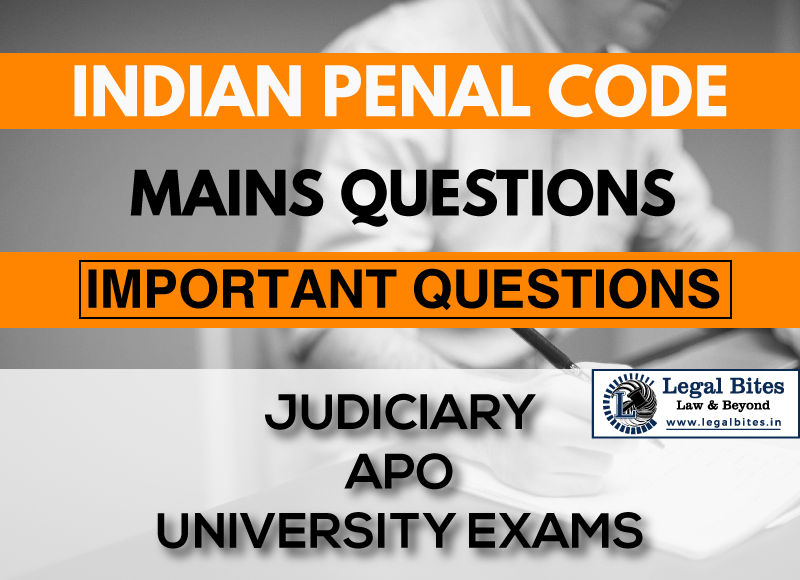Dishonest Misappropriation | A finds a ring on the highway, not in possession of any person. A picks it up. What offence has been committed by A in this case?
Dishonest Misappropriation | Question: A finds a ring on the highway, not in possession of any person. A picks it up. What offence has been committed by A in this case? [UPCJ 1985 and 1997] Find the answer to the mains question only on Legal Bites. Dishonest Misappropriation | [A finds a ring on the highway, not in… Read More »
;
Dishonest Misappropriation | Question: A finds a ring on the highway, not in possession of any person. A picks it up. What offence has been committed by A in this case? [UPCJ 1985 and 1997] Find the answer to the mains question only on Legal Bites. Dishonest Misappropriation | [A finds a ring on the highway, not in possession of any person. A picks it up. What offence has been committed by A in this case?] Answer Section 403 defines Dishonest misappropriation of property and states...
Dishonest Misappropriation | Question: A finds a ring on the highway, not in possession of any person. A picks it up. What offence has been committed by A in this case? [UPCJ 1985 and 1997]
Find the answer to the mains question only on Legal Bites. Dishonest Misappropriation | [A finds a ring on the highway, not in possession of any person. A picks it up. What offence has been committed by A in this case?]
Answer
Section 403 defines Dishonest misappropriation of property and states its punishment thereof as: Whoever dishonestly misappropriates or converts to his own use any moveable property, shall be punished with imprisonment of either description for a term which may extend to two years, or with fine, or with both.
Explanation 2.—A person who finds a property, not in the possession of any other person, and takes such property for the purpose of protecting it for, or of restoring it to, the owner, does not take or misappropriate it dishonestly, and is not guilty of an offence; but he is guilty of the offence above defined, if he appropriates it to his own use, when he knows or has the means of discovering the owner, or before he has used reasonable means to discover and give notice to the owner and has kept the property for a reasonable time to enable the owner to claim it.
What are reasonable means or what is a reasonable time in such a case, is a question of fact. It is not necessary that the finder should know who the owner of the property is, or that any particular person is the owner of it; it is sufficient if, at the time of appropriating it, he does not believe it to be his own property, or in good faith belief that the real owner cannot be found.
Illustration (a) to section: A finds a rupee on the high road, not knowing to whom the rupee belongs. A picks up the rupee. Here A has not committed the offence defined in this section.
Therefore, in the present case at hand, when A finds a ring on the highway, not in possession of any person and picks it up, A does not know or has any reasonable means of discovering the owner of the ring and he has not picked up the ring with a dishonest intention to put it into his own use. So, he will not be guilty under section 403.
Important Mains Questions Series for Judiciary, APO & University Exams
- IPC Mains Questions Series Part I: Important Questions
- IPC Mains Questions Series Part II: Important Questions
- IPC Mains Questions Series Part III: Important Questions
- IPC Mains Questions Series Part IV: Important Questions
- IPC Mains Questions Series Part V: Important Questions
- IPC Mains Questions Series Part VI: Important Questions
- IPC Mains Questions Series Part VII: Important Questions
- IPC Mains Questions Series Part VIII: Important Questions
- IPC Mains Questions Series Part IX: Important Questions
- IPC Mains Questions Series Part X: Important Questions


